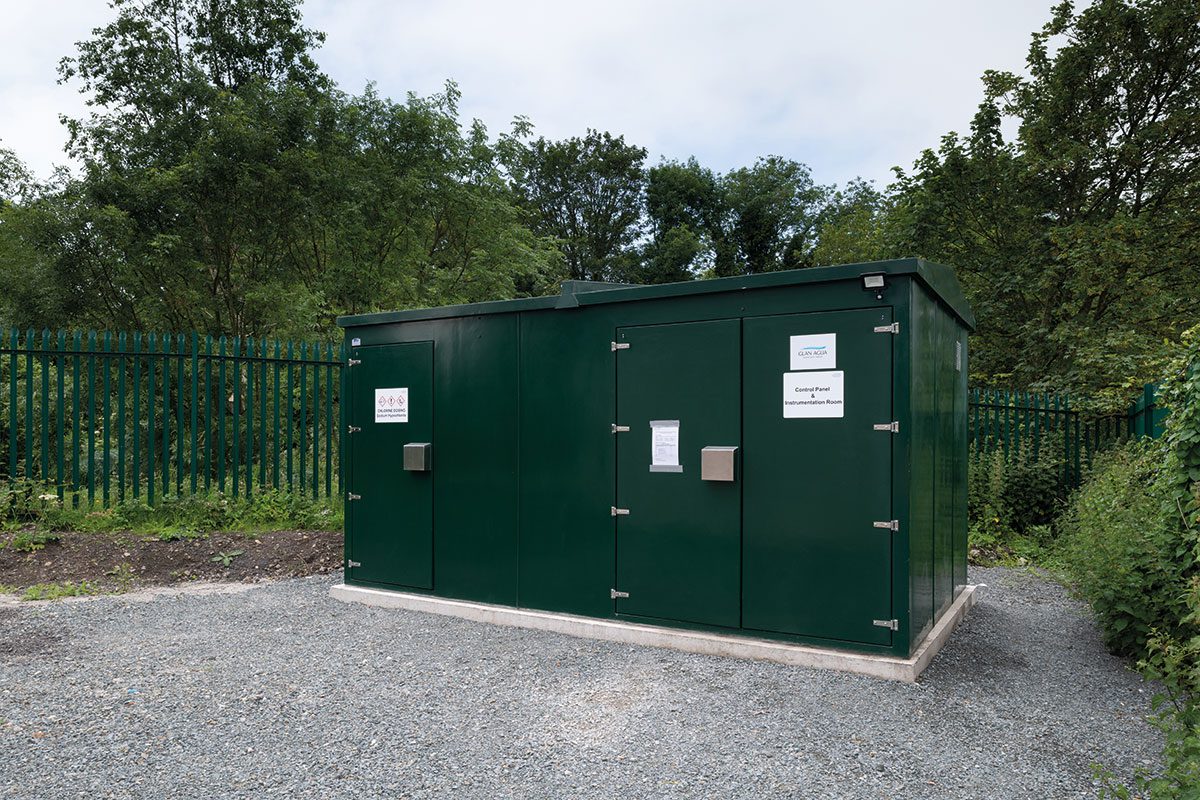Water and wastewater treatment firm Evoqua Water Technologies shares details of recent work undertaken during an update to Irish Water’s Bruree Pumping Station, improvements with a direct bearing on water quality

As part of its National Disinfection Programme, Irish Water is investing over €65 million in the upgrade and standardisation of disinfection systems currently installed in over 864 public drinking water treatment plants, pumping stations and reservoirs. The programme will ensure compliance with the current Drinking Water Quality Regulations and improve the quality of drinking water for homes and businesses throughout the Republic of Ireland, minimising the risk of boil water notices.
Irish Water’s framework design and build contractor for the Limerick and Tipperary area is Glan Agua. One of their early projects was a comprehensive upgrade of the Bruree Pumping Station in Co. Limerick. “The project involved upgrading the existing sodium hypochlorite system to provide enhanced control for improved bacteriological compliance”, says Glan Agua’s Project Manager, Robert Kearney. “We also installed a state-of-the-art UV system to ensure protozoan compliance and improve drinking water quality.” It seemed to Robert’s team that the easiest way to complete the project in the shortest time would be to design a self-contained hypochlorite dosing and UV system that could be fully pre-fabricated in Glan Agua’s off-site assembly facility in Cahir, Co Tipperary. This would allow the packaged system to be constructed in a controlled environment and tested prior to delivery and installation, minimising disruption to the operation of the existing works. It would also provide a standard solution for future projects in Limerick and Tipperary with the added advantage that operations and maintenance staff would see an identical plant at each works, reduce spares holding and minimise maintenance costs.
Over the last decade, chemical-free UV has become the process of choice for the control of chlorine resistant organisms, and is particularly effective against protozoans like Cryptosporidium and Giardia. Nevertheless, UV is a specialised technology and Robert’s team needed help with the design development. They found a willing collaborator in Enva, one of Evoqua atg’s business partners in Ireland. Working closely with Enva and Glan Agua, Evoqua designed a low flow UV system, based on their UVLX technology, which would become an integral part of the Glan Agua standardised design and build package for other water schemes.
The UVLX reactors use an 800W low pressure amalgam UV lamp with a specially designed secondary control circuit that allows the UV lamp to run at operational powers as low as 30%, giving a better than 3:1 turndown. This means that the UVLX systems can handle low flows of variable quality water, so providing the high degree of flexibility needed in a standard package. With a useable lamp life of 16,000 hours, operators are able run their UV plant for longer periods than conventional systems before scheduled maintenance is required.
The standard design developed for Glan Agua includes duty and standby UVLX-1800-6 reactors constructed in 316L stainless steel, each containing a single 800W low pressure amalgam lamp. The IP66 rated reactor is equipped with UV intensity and temperature monitoring and an automatic wiper system to ensure peak performance. A Spectra II local control panel controls the lamp output by varying the power in response to flow, UV transmittance and UV intensity.
Like all Evoqua’s municipal water treatment UV systems, the product is designed to meet the validation protocols of the US EPA Ultraviolet Disinfection Guidance Manual. It also meets the latest UK and European potable drinking water regulations, including the WIMES 801.B specification guidance for closed vessel drinking water UV systems.
Whilst the prime role of the UV system is to ensure that protozoans like Cryptosporidium are destroyed, it also acts as a primary disinfectant to reduce bacteria and viruses as well as improving the palatability of the water. By removing much of the bacterial load, UV reduces the hypochlorite dose required to maintain a free chlorine residual, making chlorination control simpler and reducing the potential for taste and odour and trihalo-methane formation.

Jamie Barry of ENVA worked effectively as the collaborative engineering link between Glan Agua and Evoqua atg. “It was really enjoyable working with James Leigh and the team at Glan Agua to develop a product to service the potable water site at Bruree and others around Ireland.”
The Bruree project was completed in July 2019 and was so successful that Evoqua atg has now supplied twenty of the UVLX-1800-6 UV units to Glan Agua for projects for Irish Water schemes in the Limerick and Tipperary, counties of the Republic of Ireland – a tribute to collaborative design.







